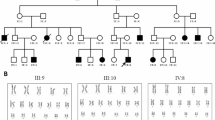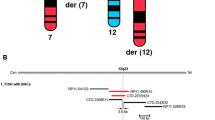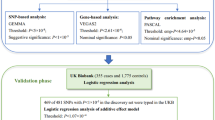Abstract
Multiple genomic disorders result from recurrent deletions or duplications between low copy repeat (LCR) clusters, mediated by nonallelic homologous recombination. These copy number variants (CNVs) often exhibit variable expressivity and/or incomplete penetrance. However, the population prevalence of many genomic disorders has not been estimated accurately. A subset of genomic disorders similarly characterized by CNVs between LCRs have been studied epidemiologically, including Williams-Beuren syndrome (7q11.23), Smith-Magenis syndrome (17p11.2), velocardiofacial syndrome (22q11.21), Prader-Willi/Angelman syndromes (15q11.2q12), 17q12 deletion syndrome, and Charcot-Marie-Tooth neuropathy type 1/hereditary neuropathy with liability to pressure palsy (PMP22, 17q11.2). We have generated a method to estimate prevalence of highly penetrant genomic disorders by (1) leveraging epidemiological data for genomic disorders with previously reported prevalence estimates, (2) obtaining chromosomal microarray data on genomic disorders from a large medical genetics clinic; and (3) utilizing these in a linear regression model to determine the prevalence of this syndromic copy number change among the general population. Using our algorithm, the prevalence for five clinically relevant recurrent genomic disorders: 1q21.1 microdeletion (1/6882 live births) and microduplication syndromes (1/6309), 15q13.3 microdeletion syndrome (1/5525), and 16p11.2 microdeletion (1/3021) and microduplication syndromes (1/4216), were determined. These findings will inform epidemiological strategies for evaluating those conditions, and our method may be useful to evaluate the prevalence of other highly penetrant genomic disorders.
Similar content being viewed by others
Log in or create a free account to read this content
Gain free access to this article, as well as selected content from this journal and more on nature.com
or
References
Sharp A, Mefford H, Li K, Baker C, Skinner C, Stevenson R, et al. A recurrent 15q13.3 microdeletion syndrome associated with mental retardation and seizures. Nat Genet. 2008;40:322–328.
Miller D, Adam M, Aradhya S, Biesecker L, Brothman A, Carter N, et al. Consensus statement: chromosomal microarray is a first-tier clinical diagnostic test for individuals with developmental disabilities or congenital anomalies. Am J Hum Genet. 2010;86:749–764.
Õiglane‐Shlik E, Talvik T, Žordania R, Põder H, Kahre T, Raukas E, et al. Prevalence of Angelman syndrome and Prader–Willi syndrome in Estonian children: Sister syndromes not equally represented. Am J Med Genet A. 2006;140A:1936–1943.
Kyllerman. On the prevalence of Angelman syndrome. Am J Med Genet. 1995;59:405–405.
Meretoja P, Silander K, Kalimo H, Aula P, Meretoja A, Savontaus ML. Epidemiology of hereditary neuropathy with liability to pressure palsies (HNPP) in south western Finland. Neuromuscul Disord. 1997;7:529–532.
Strømme P, Bjørnstad PG, Ramstad K. Prevalence estimation of Williams syndrome. J Child Neurol. 2002;17:269–271.
Shprintzen R. Velo‐cardio‐facial syndrome: 30 Years of study. Dev Disabil Res Rev. 2008;14:3–10.
Greenberg F, Guzzetta V, Montes de Oca-Luna R, Magenis RE, Smith AC, Richter SF, et al. Molecular analysis of the Smith-Magenis syndrome: a possible contiguous-gene syndrome associated with del(17)(p11.2). Am J Hum Genet. 1991;49:1207–1218.
Gillentine MA, Berry LN, Goin-Kochel RP, Ali MA, Ge J, Guffey D, et al. The cognitive and behavioral phenotypes of individuals with CHRNA7 duplications. J Autism Dev Disord. 2017;47:549–562.
Turner D, Miretti M, Rajan D, Fiegler H, Carter N, Blayney M, et al. Germline rates of de novo meiotic deletions and duplications causing several genomic disorders. Nat Genet. 2007;40:90–95.
Bernier R, Steinman KJ, Reilly B, Wallace AS, Sherr EH, Pojman N, et al. Clinical phenotype of the recurrent 1q21.1 copy-number variant. Genet Med. 2016;18:341–349.
Dolcetti A, Silversides C, Marshall C, Lionel A, Stavropoulos D, Scherer S, et al. 1q21.1 Microduplication expression in adults. Genet Med. 2012;15:282–289.
Malhotra D, Sebat J. CNVs: harbingers of a rare variant revolution in psychiatric genetics. Cell. 2012;148:1223–1241.
Gillentine MA, Schaaf CP. The human clinical phenotypes of altered CHRNA7 copy number. Biochem Pharmacol. 2015;97:352–362.
Antonacci F, Dennis M, Huddleston J, Sudmant P, Steinberg K, Rosenfeld J, et al. Palindromic GOLGA8 core duplicons promote chromosome 15q13.3 microdeletion and evolutionary instability. Nat Genet. 2014;46:1293–1302.
Stefansson H, Meyer-Lindenberg A, Steinberg S, Magnusdottir B, Morgen K, Arnarsdottir S, et al. CNVs conferring risk of autism or schizophrenia affect cognition in controls. Nature. 2013;505:361–366.
Kendall KM, Rees E, Escott-Price V, Einon M, Thomas R, Hewitt J, et al. Cognitive performance among carriers of pathogenic copy number variants: analysis of 152,000 UK biobank subjects.Biol Psychiatry. 2017;82:103–110.
Rosenfeld JA, Coe BP, Eichler EE, Cuckle H, Shaffer LG. Estimates of penetrance for recurrent pathogenic copy-number variations. Genet Med. 2013;15:478–481.
Männik K, Mägi R, Macé A, Cole B, Guyatt AL, Shihab HA, et al. Copy number variations and cognitive phenotypes in unselected populations. JAMA. 2015;313:2044–2054.
Girirajan S, Rosenfeld JA, Coe BP, Parikh S, Friedman N, Goldstein A, et al. Phenotypic heterogeneity of genomic disorders and rare copy-number variants. N Engl J Med. 2012;367:1321–1331.
Acknowledgements
The project was supported in part by IDDRC grant number 1U54 HD083092 from the Eunice Kennedy Shriver National Institute of Child Health & Human Development. M. Gillentine was supported by Grant Number T32GM008307 from the National Institute of General Medical Sciences.
Author information
Authors and Affiliations
Corresponding author
Ethics declarations
Conflict of Interest
The authors declare that they have no conflict of interest.
Rights and permissions
About this article
Cite this article
Gillentine, M.A., Lupo, P.J., Stankiewicz, P. et al. An estimation of the prevalence of genomic disorders using chromosomal microarray data. J Hum Genet 63, 795–801 (2018). https://doi.org/10.1038/s10038-018-0451-x
Received:
Revised:
Accepted:
Published:
Issue date:
DOI: https://doi.org/10.1038/s10038-018-0451-x
This article is cited by
-
Behavioral changes in patients with Prader-Willi syndrome receiving diazoxide choline extended-release tablets compared to the PATH for PWS natural history study
Journal of Neurodevelopmental Disorders (2024)
-
Genetic components of microdeletion syndromes and their role in determining schizophrenia traits
Molecular Biology Reports (2024)
-
A phenome-wide association study of methylated GC-rich repeats identifies a GCC repeat expansion in AFF3 associated with intellectual disability
Nature Genetics (2024)
-
The contribution of copy number variants to psychiatric symptoms and cognitive ability
Molecular Psychiatry (2023)
-
Impaired OTUD7A-dependent Ankyrin regulation mediates neuronal dysfunction in mouse and human models of the 15q13.3 microdeletion syndrome
Molecular Psychiatry (2023)



